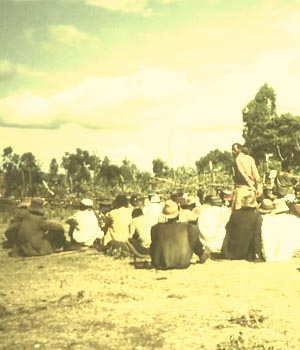360° - The Extended Museum Space
Exhibitions in Virtual Reality
The challenge of an ethnographic exhibition is the transfer of an artefact from the context of its place and time of origin – from its initial use, aesthetic appeal, and meaning – to the context of a museum.
In the show room, the object, as a representative of its original meaning, establishes new connections: with other exhibits, with the text and other multimedia elements of the exhibition, and with the museum as an institution. By scenographic means, such as exhibition architecture and lighting, these connections are worked out and support the visitor’s orientation.
Every exhibition involves interpretations and is itself the subject of an ongoing discourse between the artefact’s creators, the exhibition’s curators, and, finally, its visitors.
A 360° documentation and presentation of knowledge and interpretations permits the temporary exhibition space to be permanently extended into virtual space. The virtual sharing of exhibitions is part of the Ethnographic Museum’s strategy of exchanging ideas with institutions and individuals about the exhibits in their countries of origin.
The exhibitions of the University of Zurich’s Ethnographic Museum travel around the world as virtual exhibitions. See three of them at 100 Ways of Thinking: Mola – Crafting Beauty and Layering the World in Panama, DEVOTION – Image, Recitation, and Celebration of the Vessantara Epic in Northeast Thailand (Ethnographic Museum Zurich), as well as Drink Deeply! (Uganda National Museum).
The Ethnographic Museum belongs to the Department of Social Anthropology and Cultural Studies (ISEK) of the University of Zurich. With changing exhibitions, events, and an archive. More
Thomas Kaiser is the curator of the exhibition 'DEVOTION – Image, Recitation, and Celebration of the Vessantara Epic in Northeast Thailand'
Maike Powroznik is the curator of the exhibition 'Mola – Crafting Beauty and Layering the World in Panama'
Nelson Abiti M.A. and Amon Mugume M.A. of the Uganda National Museum are the curators of the exhibition 'Drink Deeply!'
Dr. Klaus Powroznik of 360° documentations, photography and layout and Peter Volk of 360° documenations, programming More
Related contributions
